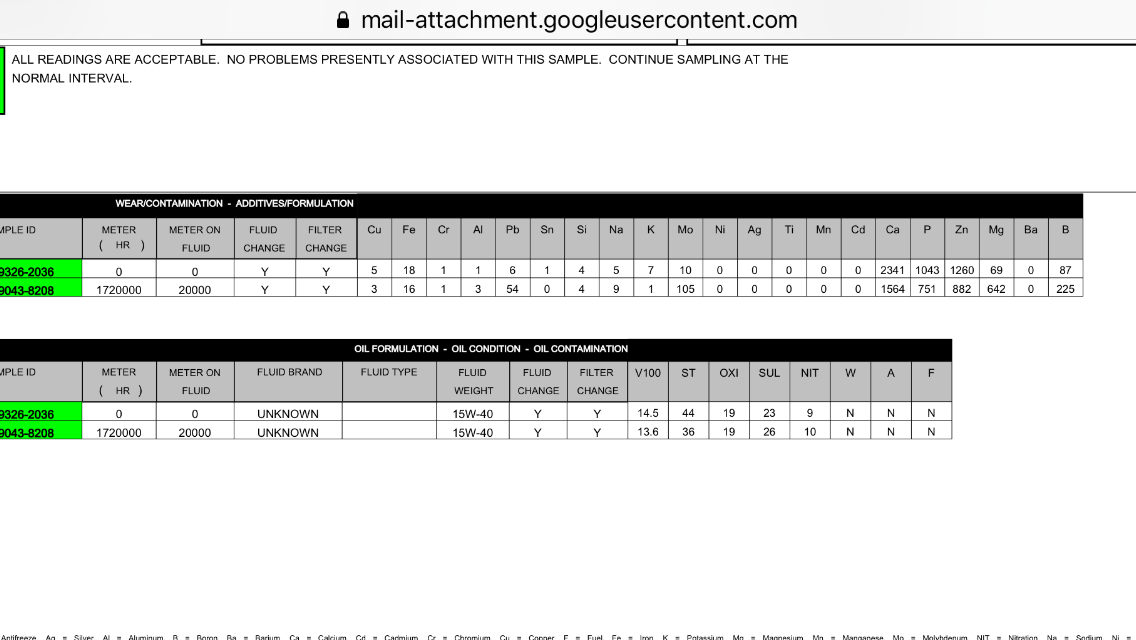| Reading oil samples |
| 12-25-2019, (Subject: Reading oil samples ) Post: #1 | |||
| |||
Reading oil samples  What are the numbers I need to pay attention to? Bottom row was from February, top row was from November. Thanks User's Signature: I have no idea what I’m doing and probably need supervising | |||
| 12-25-2019, (Subject: Reading oil samples ) Post: #2 | |||
| |||
| RE: Reading oil samples the main one of them all is always the iron (Fe) number. Take the mileage of the oil , in your case, 20,000 miles, then divide it by 1000. 20,000 / 1000 = 20 This number (20)... If your iron is higher than your (mileage/1000), then you likely have excessive wear somewhere. if it is less, then your oil is doing a decent job. Your iron shows 16. This is less than 20 ... that is a good sign for having 20,000+ miles on the oil. User's Signature: ->: What I post is just my own thoughts and Opinions! --- I AM Full Of S__T!. | |||
|
| 12-25-2019, (Subject: Reading oil samples ) Post: #3 | |||
| |||
RE: Reading oil samples (12-25-2019 )Rawze Wrote: the main one of them all is always the iron (Fe) number.Which one is soot? I guess resample next service and then compare again? User's Signature: I have no idea what I’m doing and probably need supervising | |||
| 12-28-2019, (Subject: Reading oil samples ) Post: #4 | |||
| |||
RE: Reading oil samples (12-25-2019 )DDlighttruck Wrote:(12-25-2019 )Rawze Wrote: the main one of them all is always the iron (Fe) number.Which one is soot? ST = 44, was 36 last time. This lab uses a particle count number, not a percentage like other labs. My 2013 Western Star always read in the 40’s, my 2016 Cascadia reads in the teens.. | |||
|
| 12-28-2019, (Subject: Reading oil samples ) Post: #5 | |||
| |||
RE: Reading oil samples (12-28-2019 )uncleal13 Wrote:Thanks!(12-25-2019 )DDlighttruck Wrote:(12-25-2019 )Rawze Wrote: the main one of them all is always the iron (Fe) number.Which one is soot? I’ll resample and see what the new numbers are User's Signature: I have no idea what I’m doing and probably need supervising | |||
| 12-28-2019, (Subject: Reading oil samples ) Post: #6 | |||
| |||
| RE: Reading oil samples Soot will also increase the vi index in the oil. When I get back to the shop I'll post a couple of Detroit 60 and u can see. We even run kleenoil bypass filters to try and keep condensation low so the tan (total acid number) stays low | |||
|
| « Next Oldest | Next Newest » |
NOTE: Rawze.com is not affiliated, nor endorses any of the google ads that are displayed on this website.




